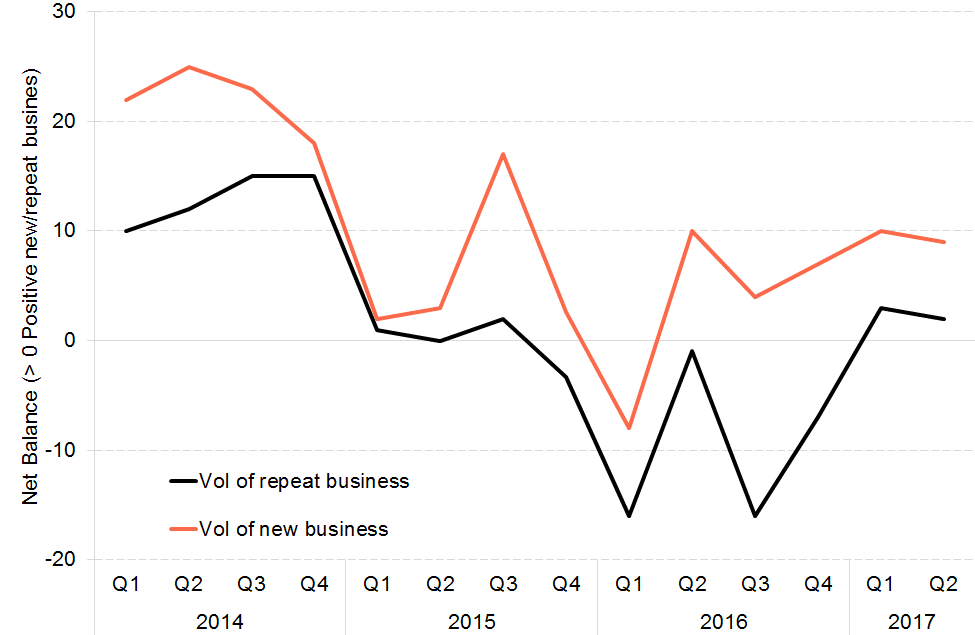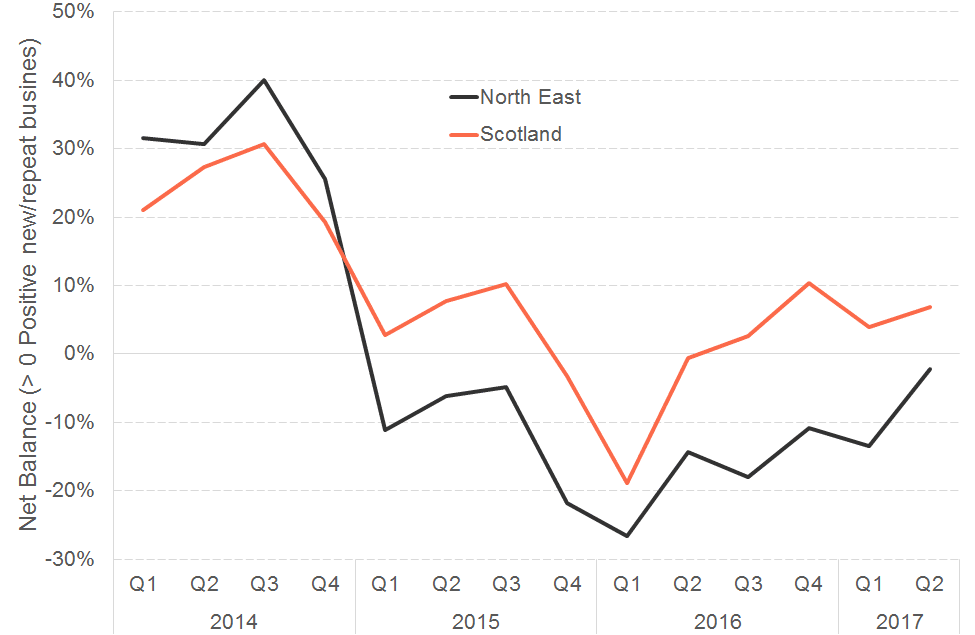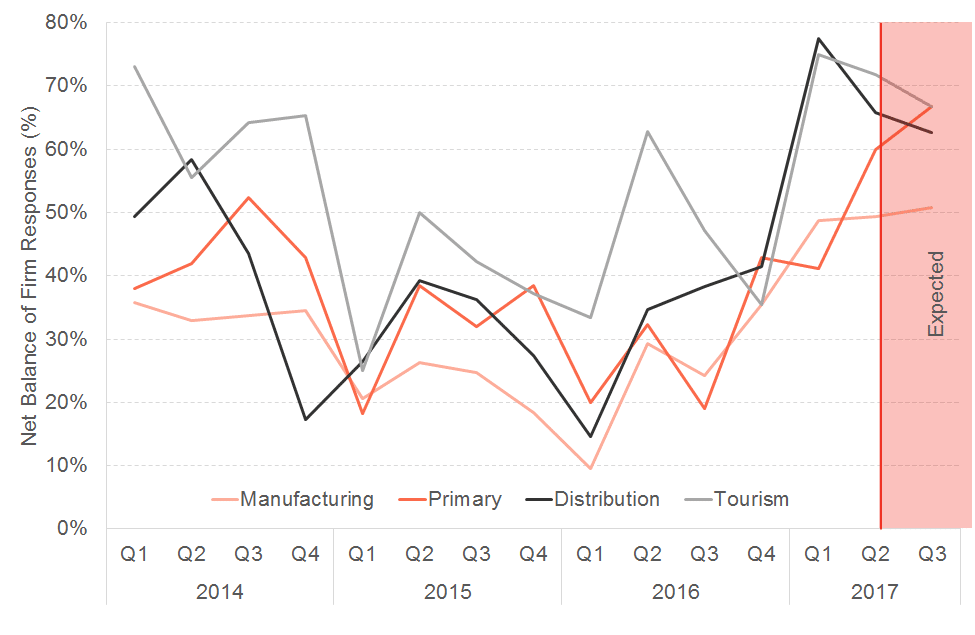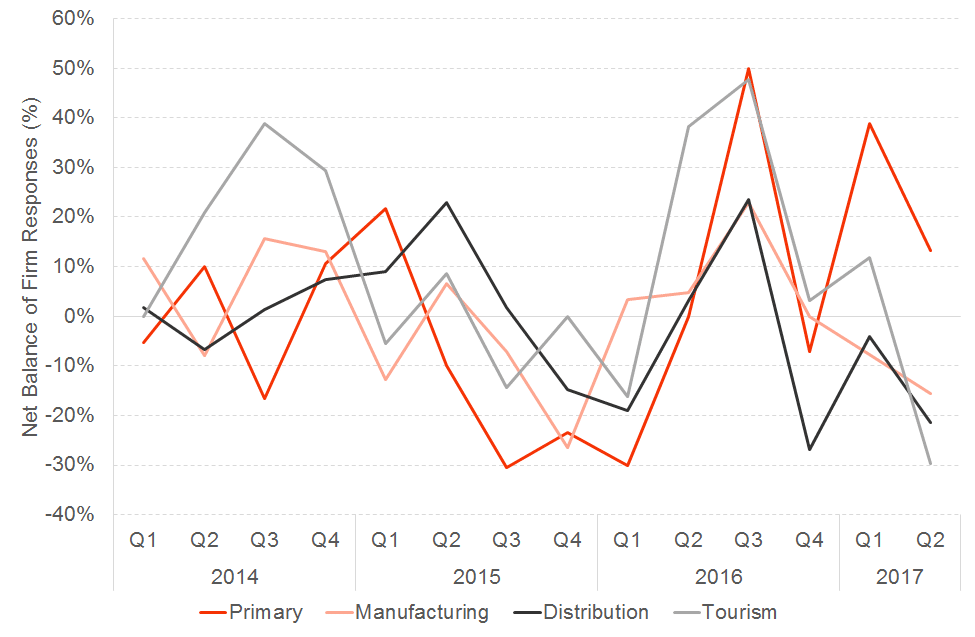Today we published our latest Scottish Business Monitor with the Royal Bank of Scotland.
The results cover the 2nd quarter of 2017 and are therefore a helpful up-to-date indicator of economic trends in Scotland. Overall, the results suggest that the Scottish economy grew in the 3-months up to the end of June, albeit at a fragile pace.
What is the Royal Bank of Scotland Scottish Business Monitor?
The Business Monitor is a business survey undertaken for the Royal Bank of Scotland by the Fraser of Allander Institute.
It provides a regular indicator of business trends, market conditions, financial factors and business conditions in the Scottish economy. The sample used is designed to be representative of the structure of the Scottish economy and takes the temperature of over 460 firms. It has been running for almost 20 years.
What is the Monitor telling us?
Firstly, the Business Monitor is showing that the total volume of business activity in Scotland increased in the 2nd quarter of 2017. Both the volume of repeat business and new business were positive – for the 2nd quarter in a row.
This suggests that the Scottish economy continued to grow in the 3-months to June, although the rate of growth remains relatively weak.
RBS/FAI Business Monitor trends in volume of business

Some interesting results emerge from underneath the headline figures.
Firstly, there continues to be a regional split in performance. In particular, businesses in all regions of Scotland – outside of the North East – reported growth in the total volume of business over the quarter. Conditions in the North East remained negative, but the situation has improved over the quarter.
RBS/FAI Business Monitor trends in total volume of business: Scotland and the North East

Secondly, there are tentative signs that confidence appears to be growing. A net +24% of all firms surveyed said they expected total business volumes to rise in the next six months. Firms in all parts of the country expect business volumes to grow, including a net 12% in the North East, suggesting that the prolonged hangover in the region since 2014’s oil price collapse is coming to an end.
Thirdly, the weak pound appears to be having both positive and negative effects. Some sectors, particularly tourism are continuing to experience decent growth in turnover, business activity and both new and repeat business, driven – in part – by the competitive value of the pound. A competitive pound makes Scotland an attractive place for overseas visitors and for Scottish/UK holidaymakers.
Overall export growth was positive for the first time in a while.
But for many, the weak pound is putting pressure on in terms of rising costs. 56% of all businesses stated that costs rose over the last quarter. Just one in 16 (6%) reported a fall.
RBS/FAI Business Monitor trends in costs

A net 49% expect costs to increase in the next six months, suggesting businesses are worried that inflationary pressures will continue to build.
Finally, of some concern has been the further fall in levels of investment being undertaken by firms (with more than one in four (27%) reporting that capital investment fell).
RBS/FAI Business Monitor trends in investment

Summary
The results from the Royal Bank of Scotland Business Monitor suggest that the Scottish economy grew in the 3 month period to the end of June. This offers some signs that Scottish businesses are remaining relatively resilient in the face of challenging trading conditions.
More encouraging is the outlook, with a greater proportion of businesses expecting higher levels of activity in the second half of the year. Inflationary pressures remain strong however, and this will act as a drag on some sectors. Others, particularly tourism and exporters will continue to see opportunities from the low value of Sterling
Authors
The Fraser of Allander Institute (FAI) is a leading economy research institute based in the Department of Economics at the University of Strathclyde, Glasgow.